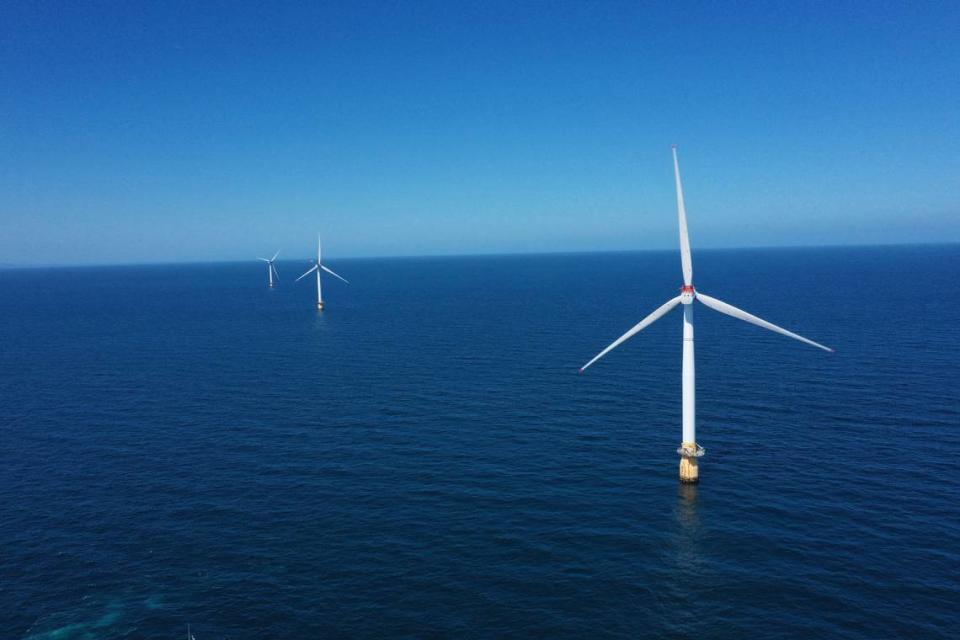Q&A on California offshore wind: What to know about the turbines, the port and more
A panel event held by The Tribune this month at Morro Bay High School discussed the kinds of port infrastructure that will be needed to support the wind turbines planned off the San Luis Obispo County coast.
The panelists were California Sen. John Laird, D-Santa Cruz; California State Lands Commission’s Climate Adaption and Special Initiatives team manager Jennifer Mattox and Vice President of Policy and Economic Development at REACH Central Coast Joshua Boswell.
During, the hourlong event on May 4, panelists discussed with Tribune reporter Mackenzie Shuman topics ranging from how San Luis Obispo County could build out some of its port infrastructure to better support the offshore wind energy industry, who holds responsibility for building out port infrastructure and various environmental reviews that will take place should additional infrastructure be proposed.
If you missed the panel event, you can view it here.
As part of the event, many in the audience of about 160 people asked additional questions about plans for the offshore wind farm.
Here, we highlight some of the key issues, along with other questions we distilled and then sent to the panelists to answer.
Some of the answers are also based on past Tribune reporting.
Watch: Does SLO County have what it takes to support offshore wind energy? Live Q&A
Who could develop the offshore wind energy in California?
The U.S. Bureau of Ocean Energy Management, or BOEM, has designated two areas off California’s coast for future wind energy development.
This includes the Humboldt wind energy area off the coast of Humboldt Bay in Northern California. That area is about 20 miles offshore and encompasses 132,369 acres of the Pacific Ocean.
In an auction in December, RWE Offshore Wind Holdings LLC bid $157.7 million to lease 63,338 acres of the Humboldt area, while California North Floating LLC bid $173.8 million for 69,031 acres.
The other area, called the Morro Bay wind energy area, is located about 20 miles off the coast of Cambria and San Simeon. It encompasses a total of 240,898 acres of the ocean.
In the December auction, Equinor Wind US LLC made the winning $130 million bid for an 80,062-acre lease in the Morro Bay area.
Central California Offshore Wind LLC won with a $150.3 million bid for one of two 80,418-acre leases in the Morro Bay area. And Invenergy California Offshore LLC bid $145.3 million for the second 80,418-acre lease.
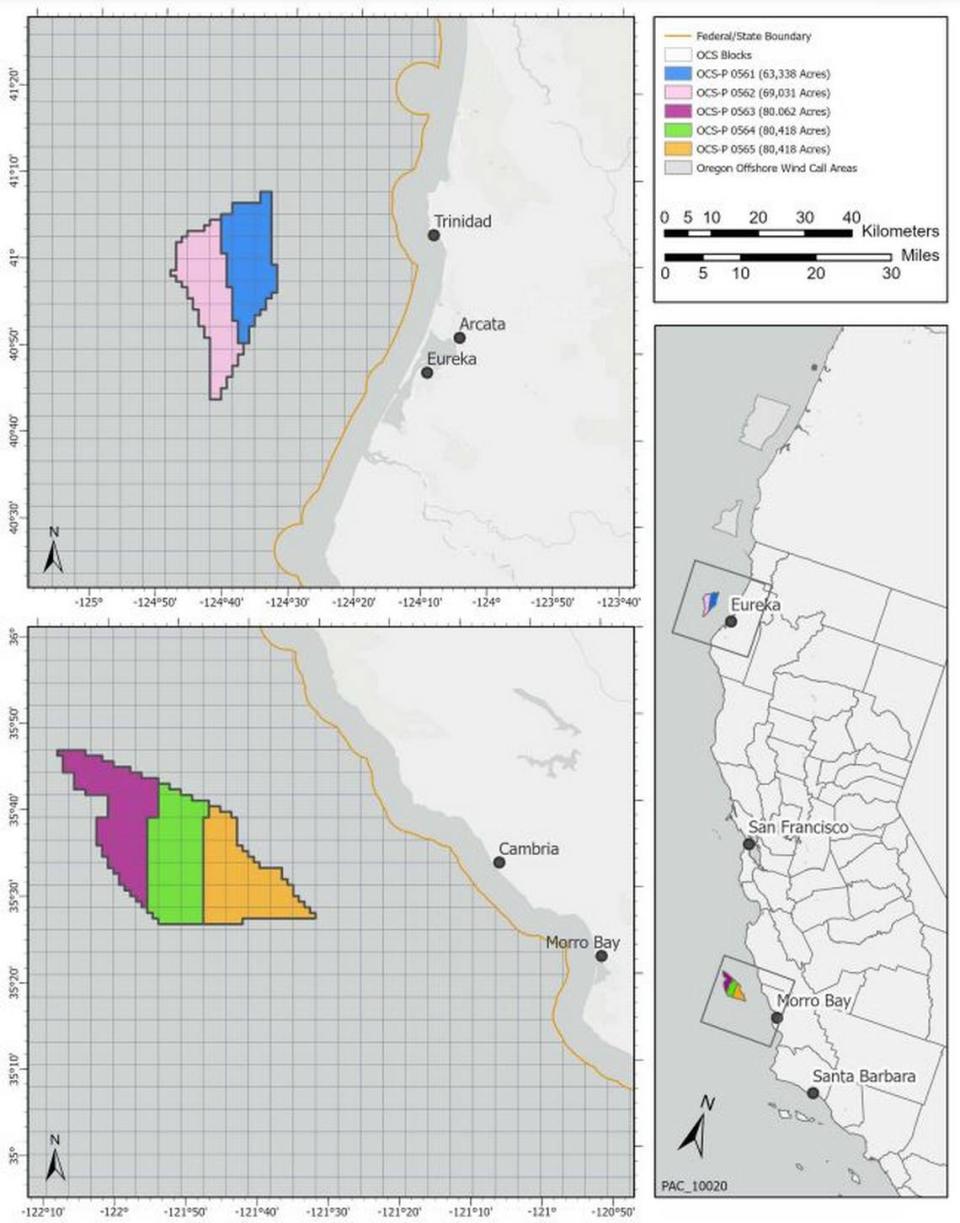
How much electricity could the offshore wind energy developments generate?
BOEM has long said that the two wind energy areas could generate a total of 4.5 gigawatts of electricity: about 3 gigawatts in the Morro Bay wind energy area and 1.5 gigawatts in the Humboldt area.
However, the companies who won the leases for the Morro Bay wind energy area have told The Tribune they believe they can generate a total of about 6 gigawatts of electricity at max production if the area is fully built out.
For context, Diablo Canyon nuclear power plant, which supplies about 9% of California’s electricity, produces about 2.2 gigawatts of electricity. However, it can produce that much electricity regardless of wind conditions.
How big are the wind turbines that could be in the Pacific Ocean?
The offshore wind energy industry is developing turbines that can reach up to 1,100 feet tall and generate about 15 megawatts of electricity each.
It’s unknown exactly how big or how many turbines could be built in the ocean until companies submit their plans to the federal government.
Because of the ocean depth, the turbines off the California coast will be floating structures tethered to the ocean floor 900 to 1,300 meters below.
They will be located no closer than 20 miles offshore.

Does the government know how the turbines could impact the marine environment?
The short answer is no.
Little is known about the impact floating offshore wind energy projects have on marine environments because there are very few established around the world. Of the developments already producing electricity, they are typically tiny compared to those proposed for California’s coast.
BOEM is partnering with other agencies such as the National Oceanic and Atmospheric Administration to learn more about the ocean where the turbines will be built.
Studies of which marine animals migrate and live in the wind energy areas are currently underway, along with studies to determine how to help animals avoid entanglement in the cables that extend from the turbines.
Before the offshore wind energy companies can begin placing turbines in the ocean, BOEM and the California Coastal Commission will review their plans to determine the environmental impacts and establish mitigation measures.
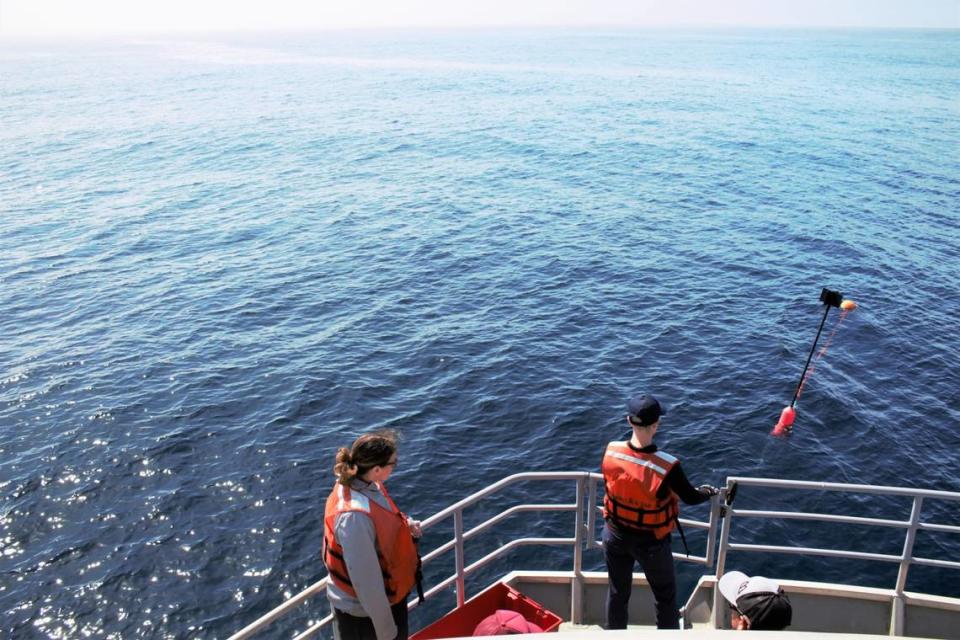
Is it possible to have minimal offshore wind energy activity in the Morro Bay. Harbor? For example, only house the crew transfer vessels, but none of the maintenance facilities or warehouses?
It is certainly possible to have minimal offshore wind energy activity in Morro Bay. There is a range of activities that could take place there and along the Central Coast.
Ultimately, this will be determined after deeper environmental analysis, what the offshore wind energy industry seeks out, if port authorities wish to develop and community input.
The decisions made on how much activity takes place in Morro Bay will shape just how much economic and jobs impact the wind industry brings to the local community.
The turbines themselves will produce renewable energy, but what about everything else involved? Will there be a transition away from the fossil fuels used in the crew transfer, maintenance, construction, etc.?
There is great opportunity to use the offshore wind energy port improvements to move toward “green ports” and electrification.
Europe is ahead of the United States in offshore wind energy development. Therefore, it has already experimented with electrification and green fuels such as hydrogen, as well as using climate-friendly construction designs and materials.
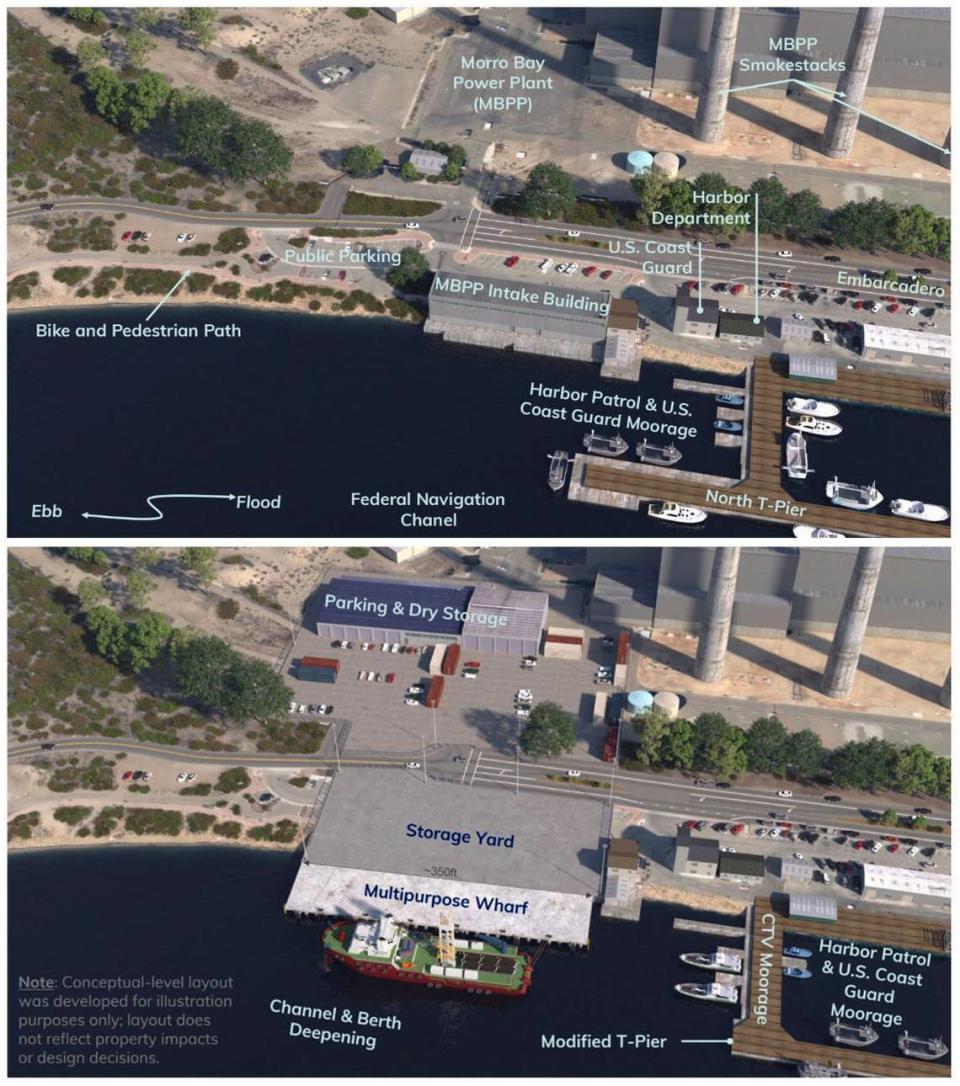
Have we looked at Europe for ideas and models on wind power and their ports? What lessons can we learn?
Yes, we are learning a lot from Europe as well as the East Coast.
Many of the questions that are being asked in Morro Bay are being worked on by communities like ours in Europe and on the East Coast, including how to carve out a role in this new energy ecosystem, how to support existing ocean users and how to ensure this is done in an environmentally responsible way.
Which state agencies will have a role in the port infrastructure developments?
The local port operators, local and regional governments, California Coastal Commission, State Lands Commission and possibly others.
My reading of the REACH study was that a large port on the Central Coast for assembly and maintenance of the turbines is critical to the feasibility of offshore wind. Is that correct or not? Is offshore power generation feasible if the major port is in Los Angeles or San Francisco?
There will likely need to be a network of ports to successfully deploy offshore wind in California.
The REACH study assessed what waterfront infrastructure might be feasible on the Central Coast. This includes both large facilities for assembly and small facilities for operations and maintenance.
Building these large and small ports along the Central Coast will take support from port authorities and local and regional governments.
Where and what size facilities the Central Coast could build to support offshore wind have not yet been determined.
However, some entities are putting their hat in the game to house the offshore wind energy port infrastructure.
The Port of Long Beach published a report in early May that detailed its proposal to build a 400-acre pier to support offshore wind energy development on the Central Coast. If built, turbines assembled in Long Beach would then be towed up to the Morro Bay and perhaps Humboldt wind energy areas.
And the California Energy Commission in March 2022 approved a $10.5 million grant for renovations at the Port of Humboldt Bay to better support the incoming industry.
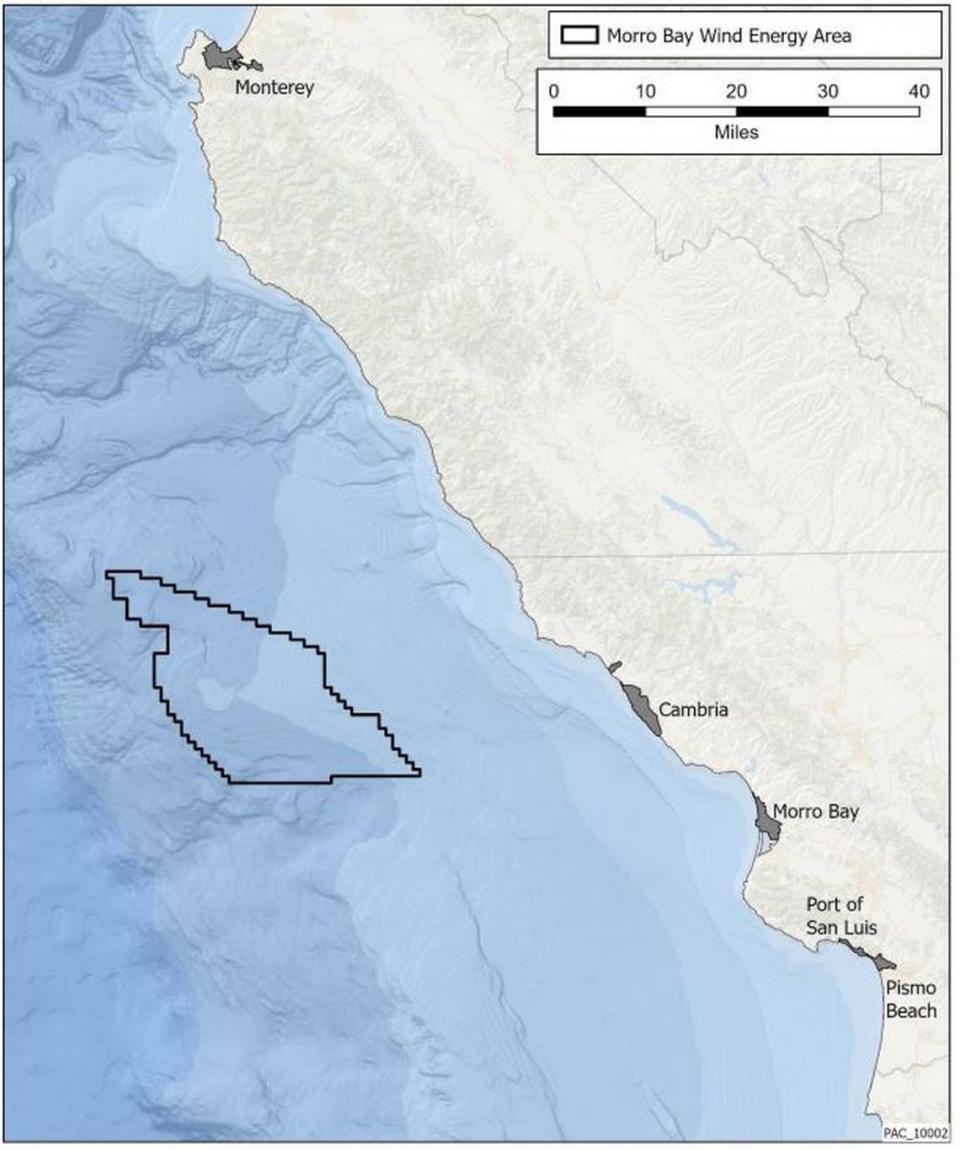
In the event Morro Bay is chosen as a port, what size crew transfer and service operation vessels will be transporting into the harbor?
It will be up to the local port authority and state entities, along with input from the offshore wind energy industry, to consider what types of vessel activities a port can accommodate.
Will the leaseholders need to pay for any port infrastructure improvements?
This has not been determined yet. It is possible there could be a cost-share model between private and public entities. This would entail private investment — perhaps from the offshore wind energy companies — as well as grants or loans from the local, state and/or federal government.
Do you have more questions you’d like answered about offshore wind? Email them to mshuman@thetribunenews.com.
